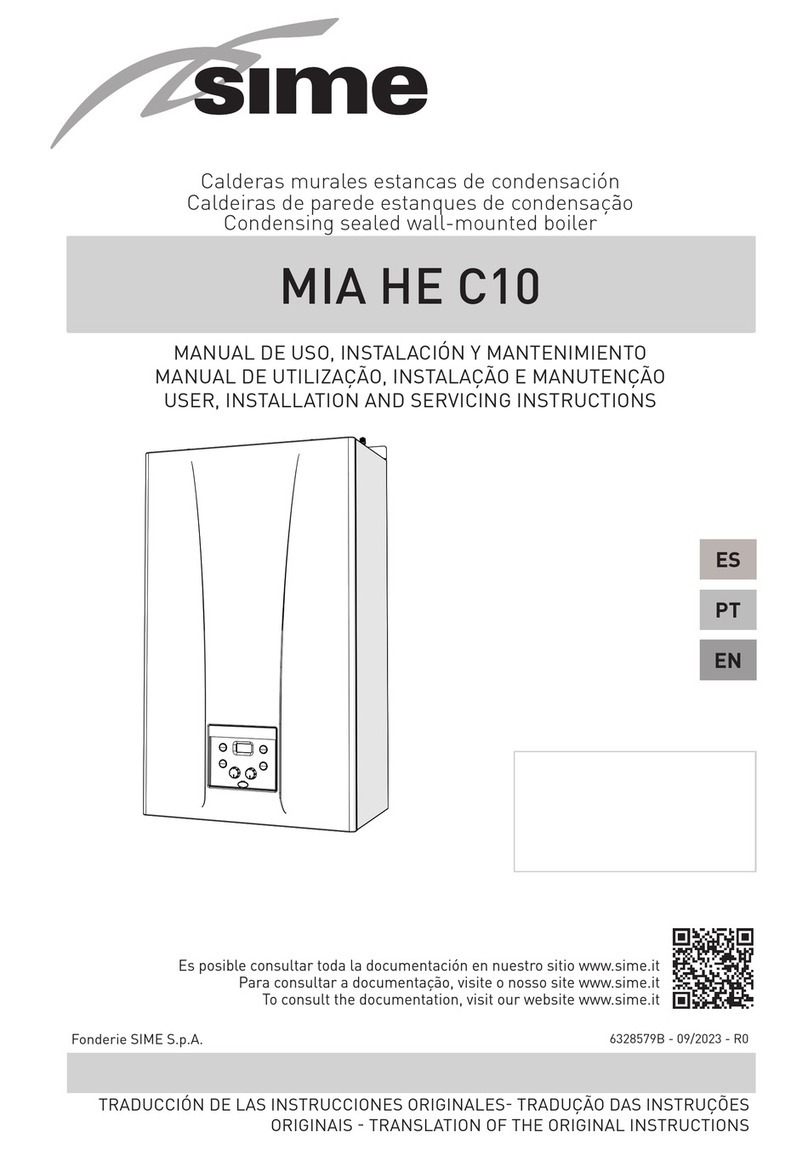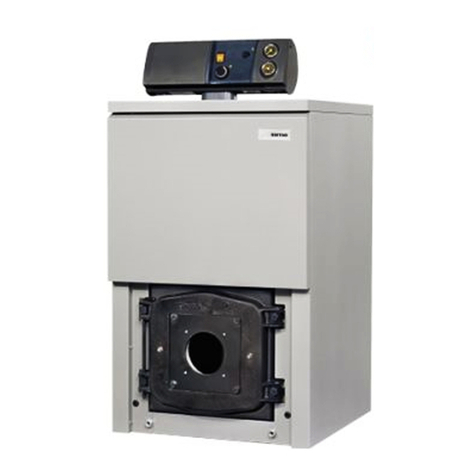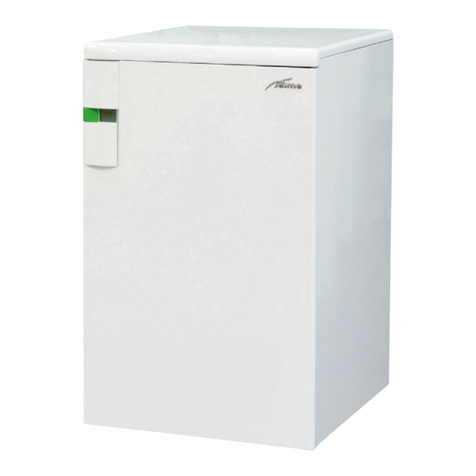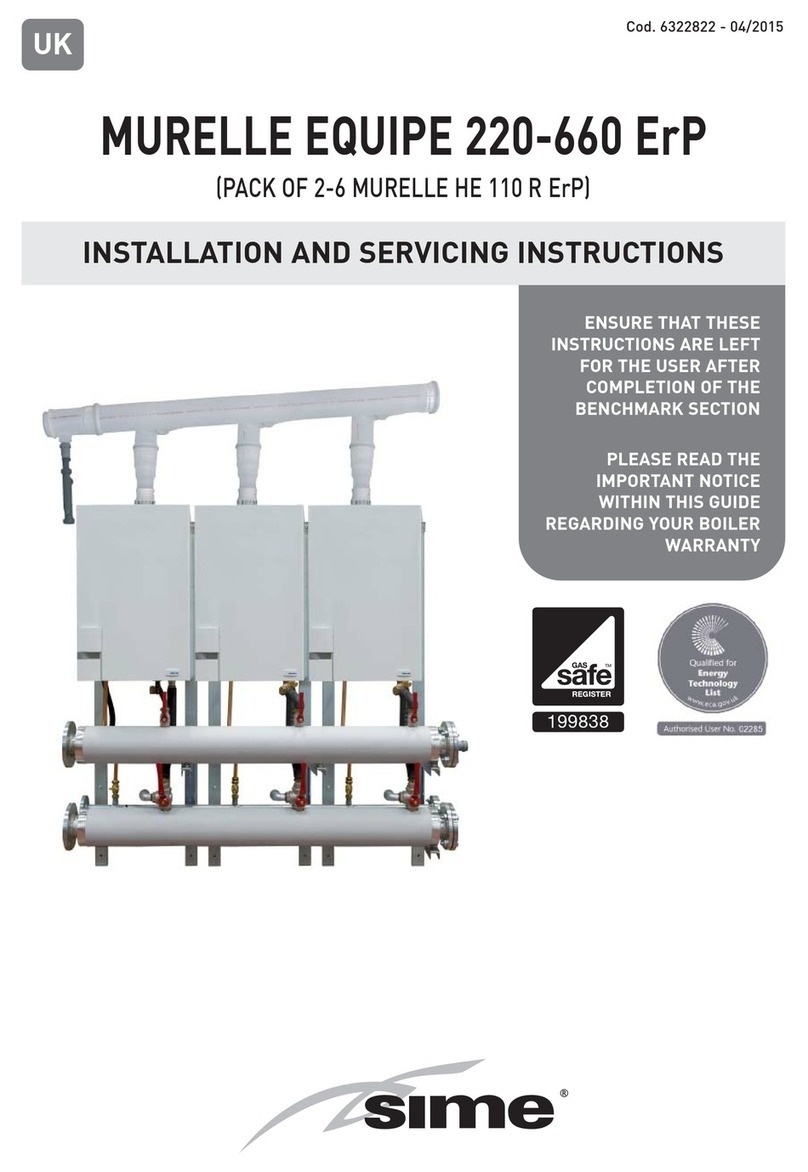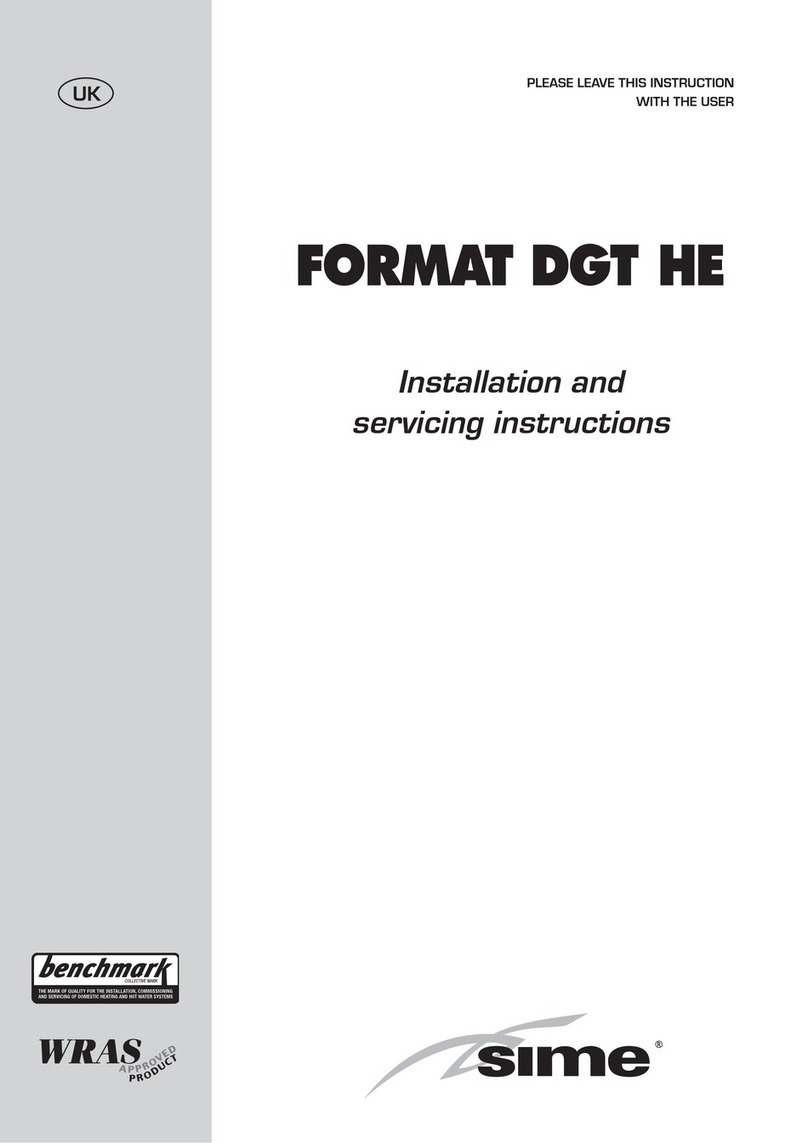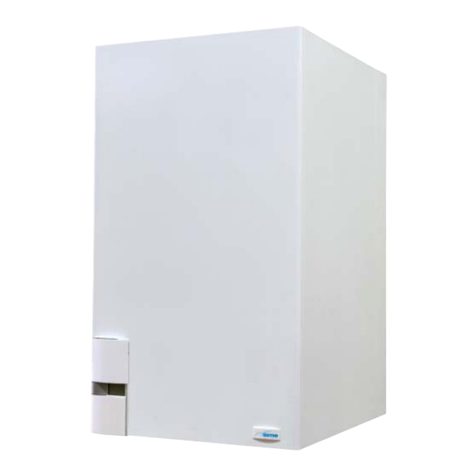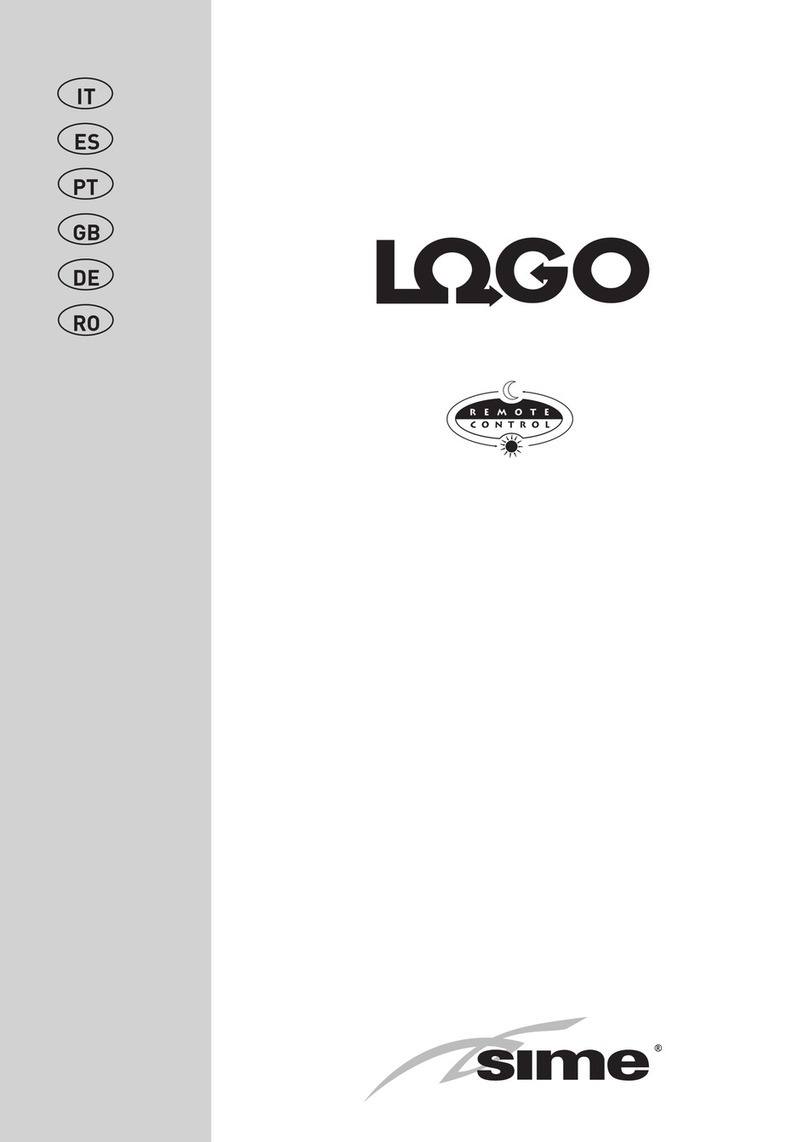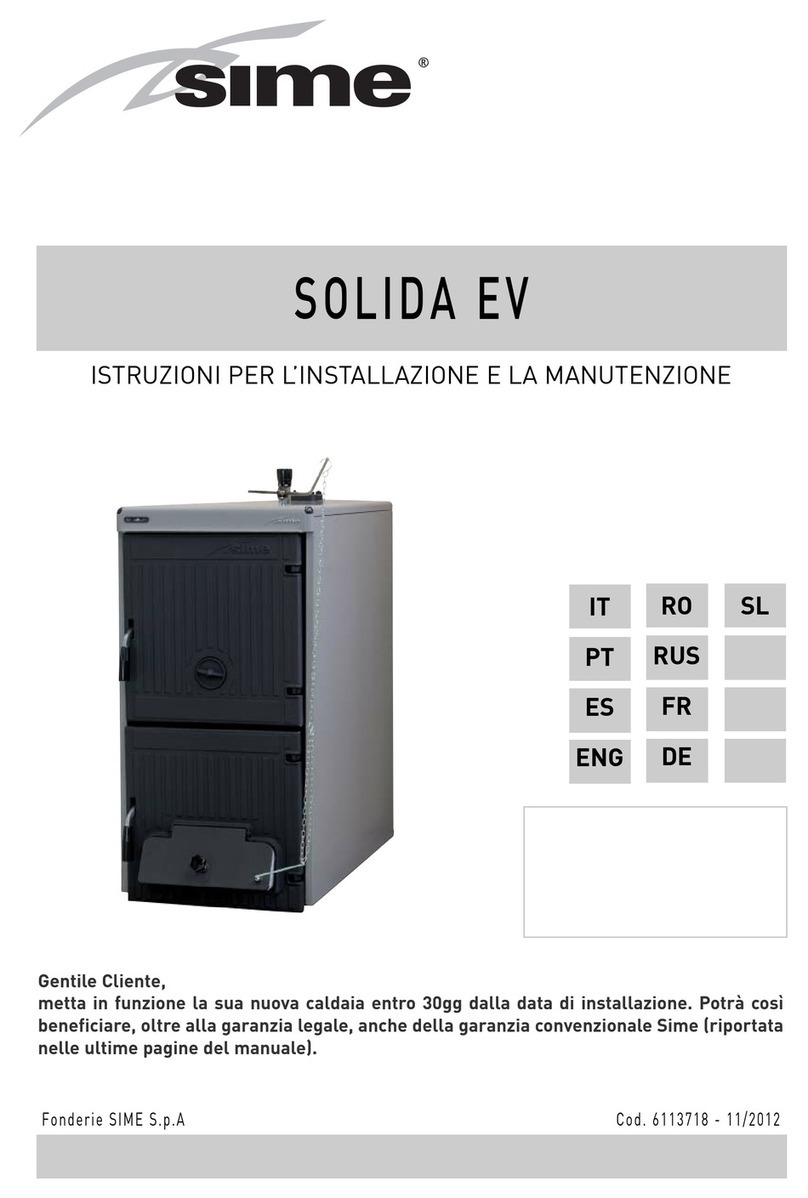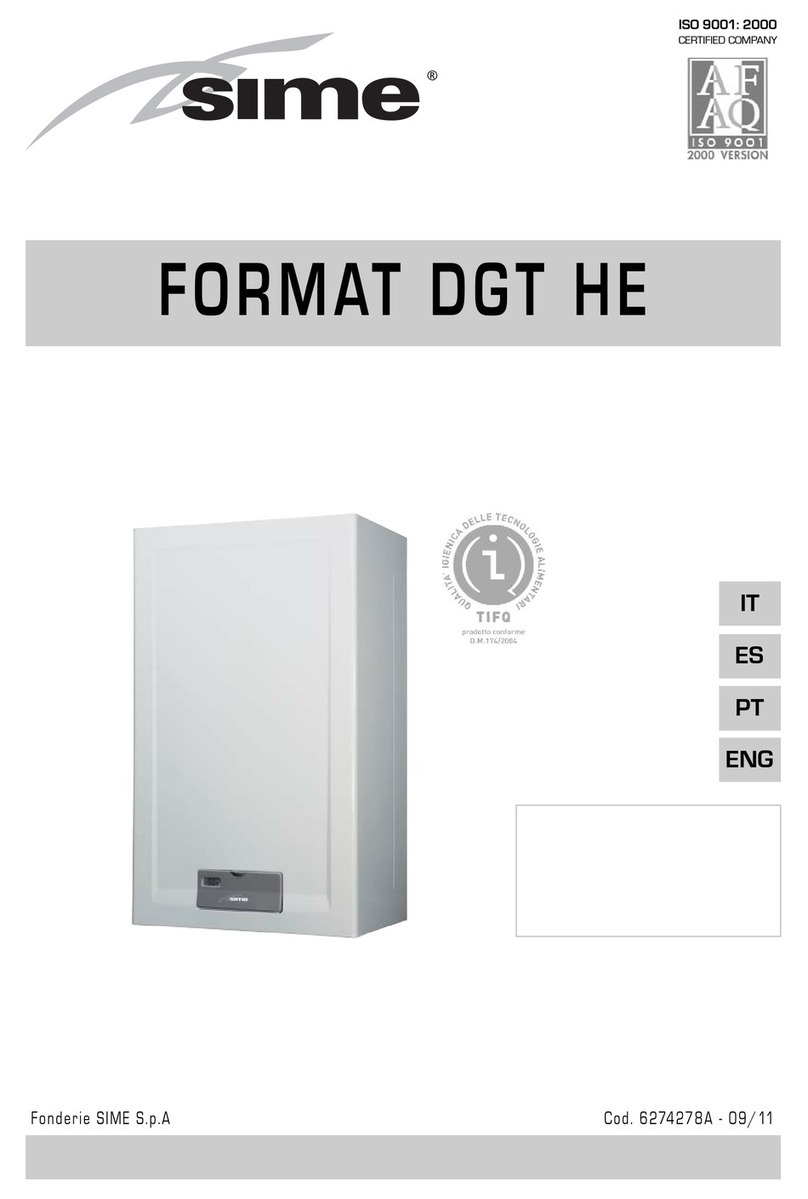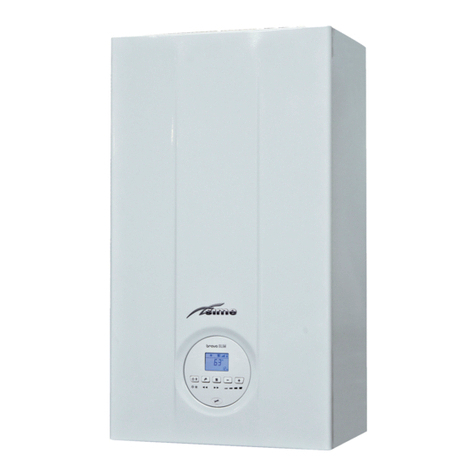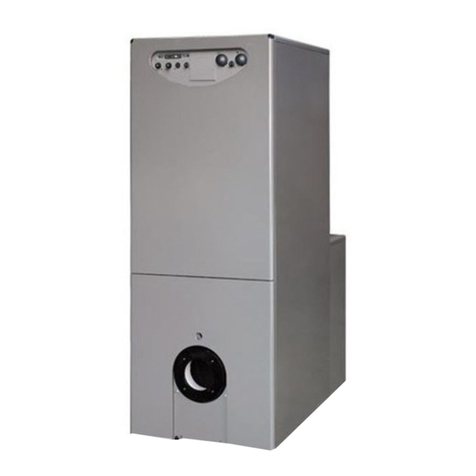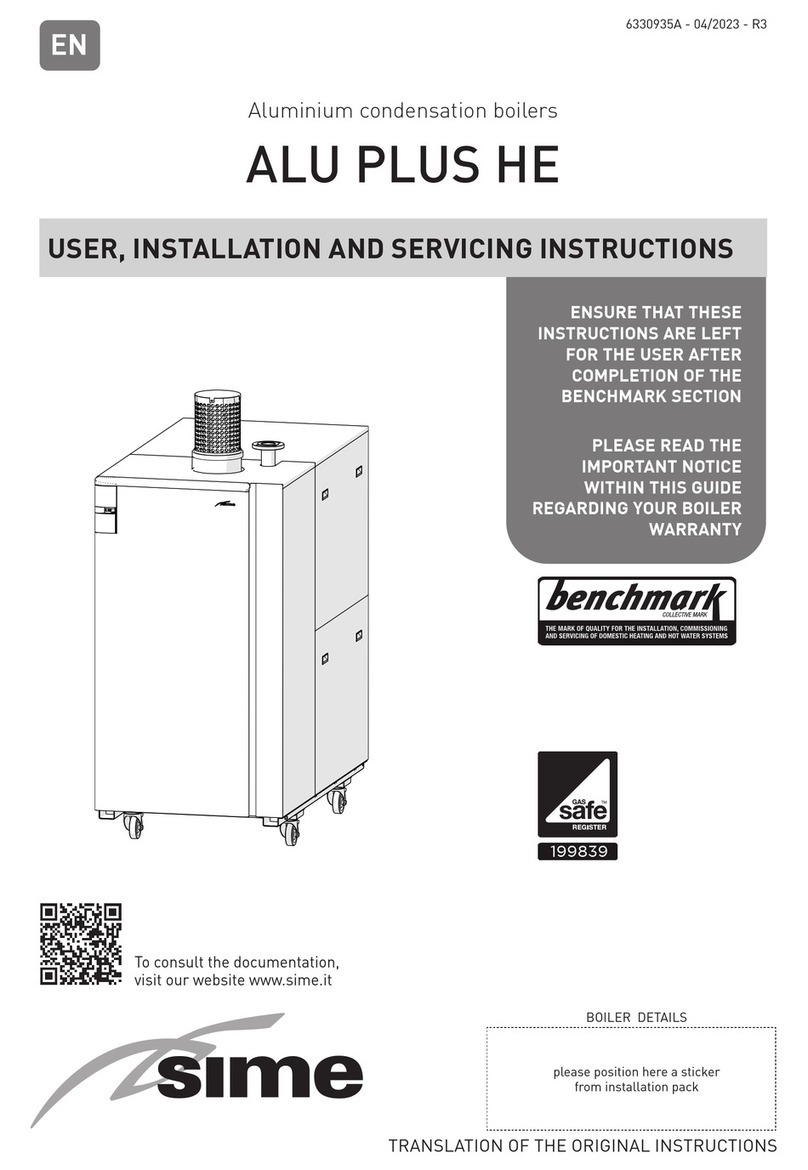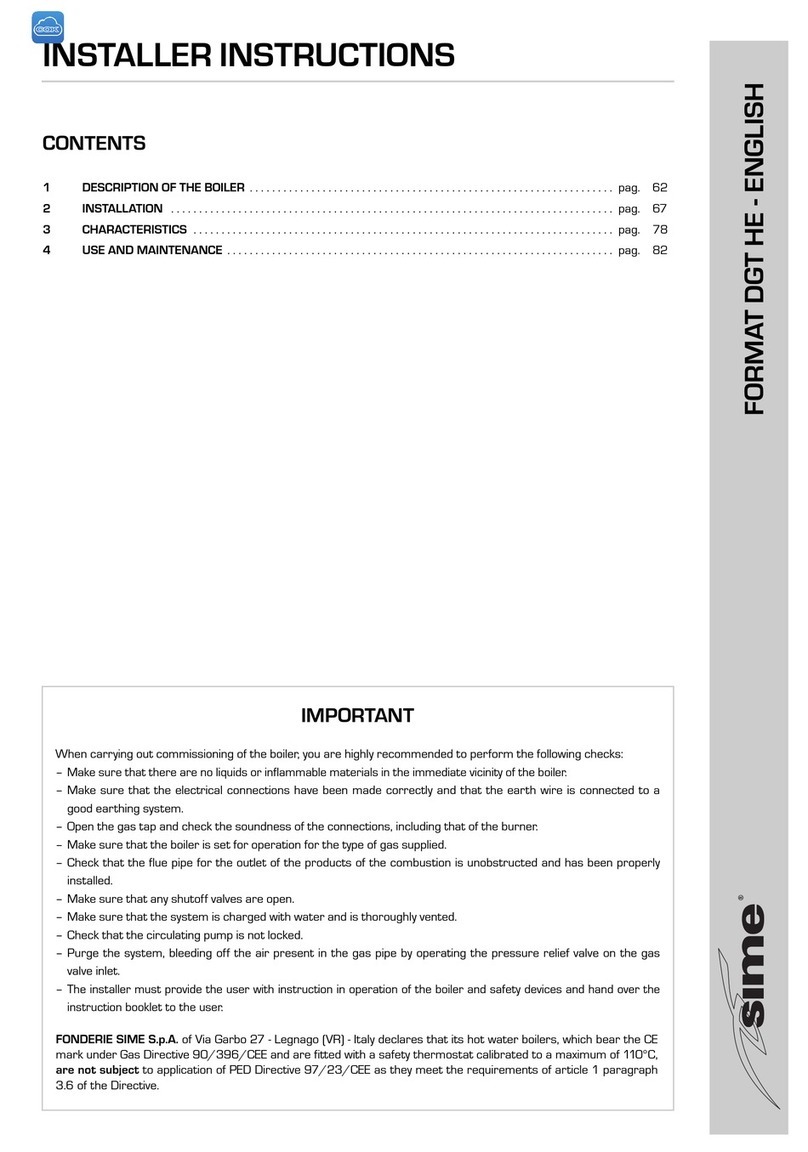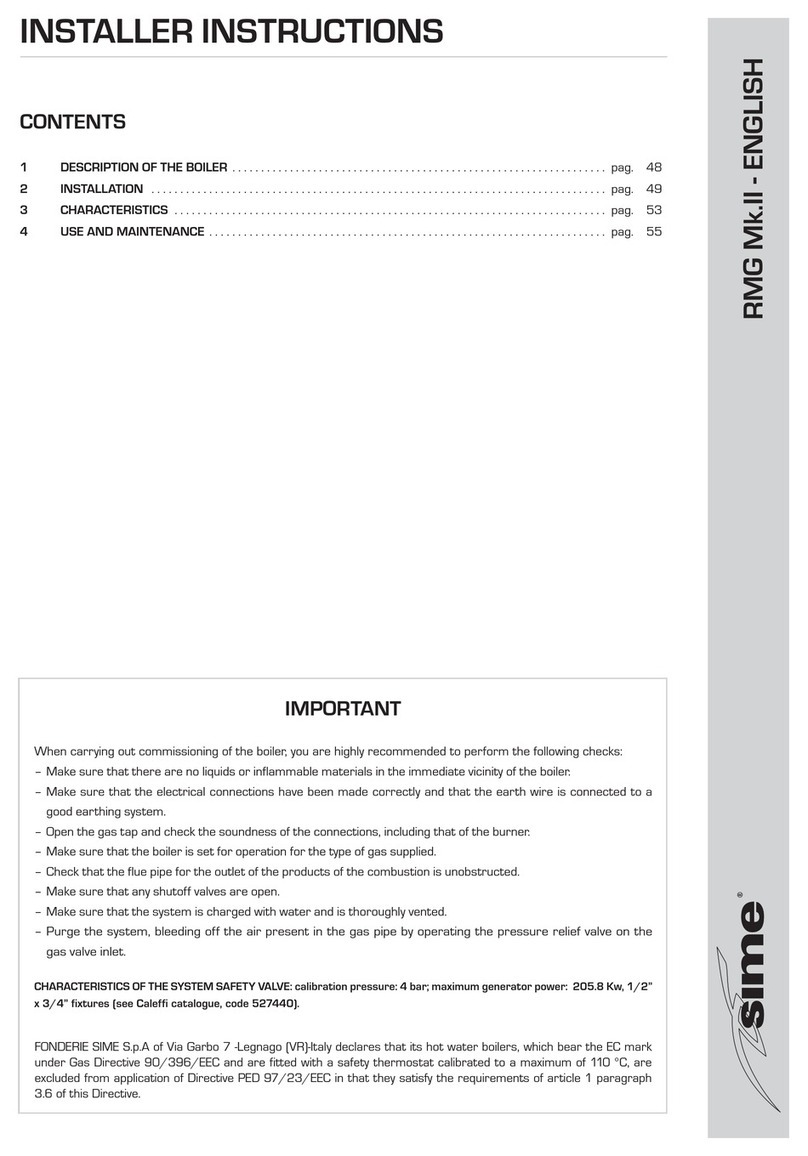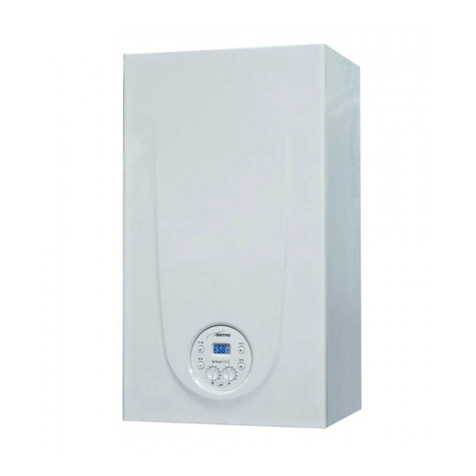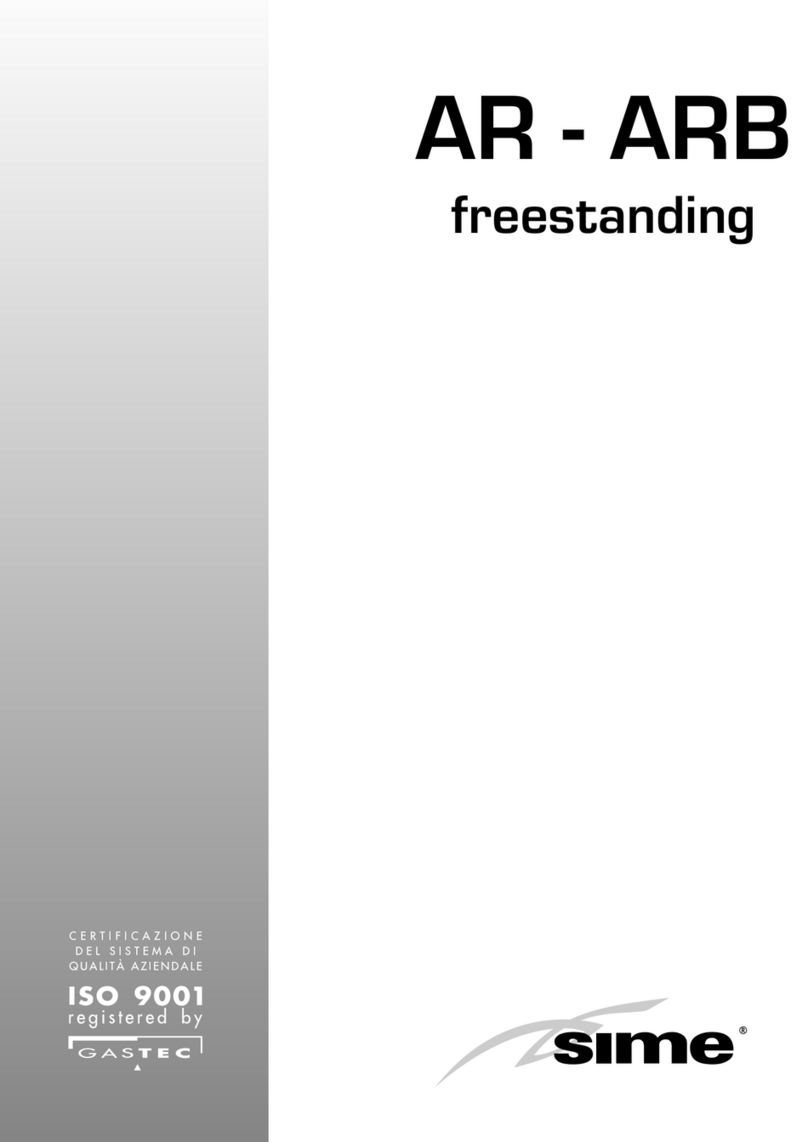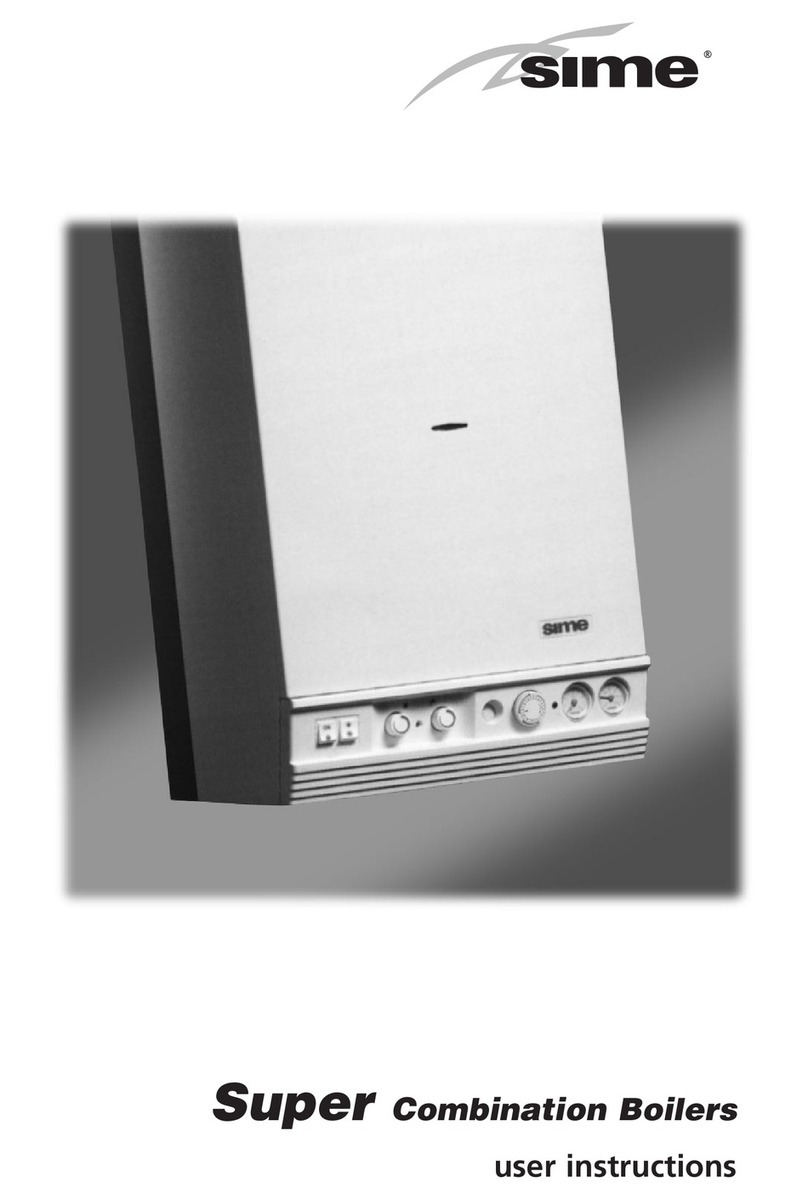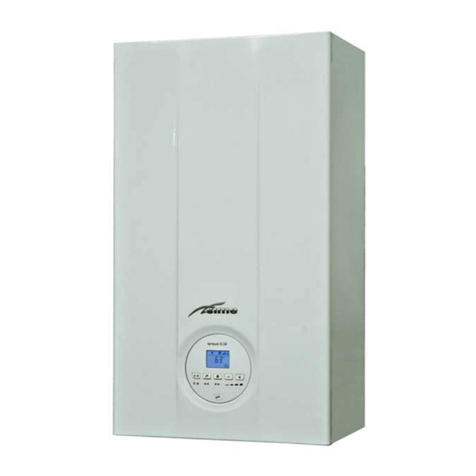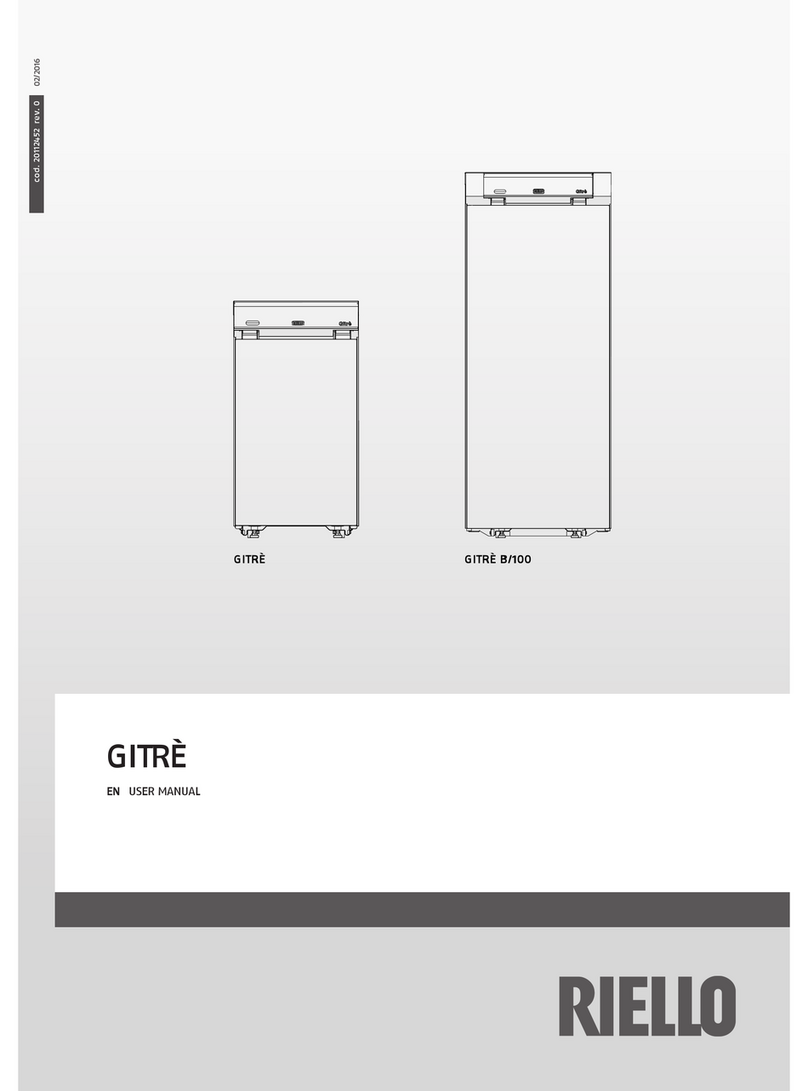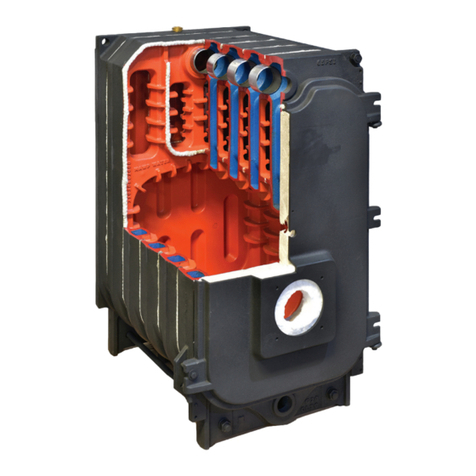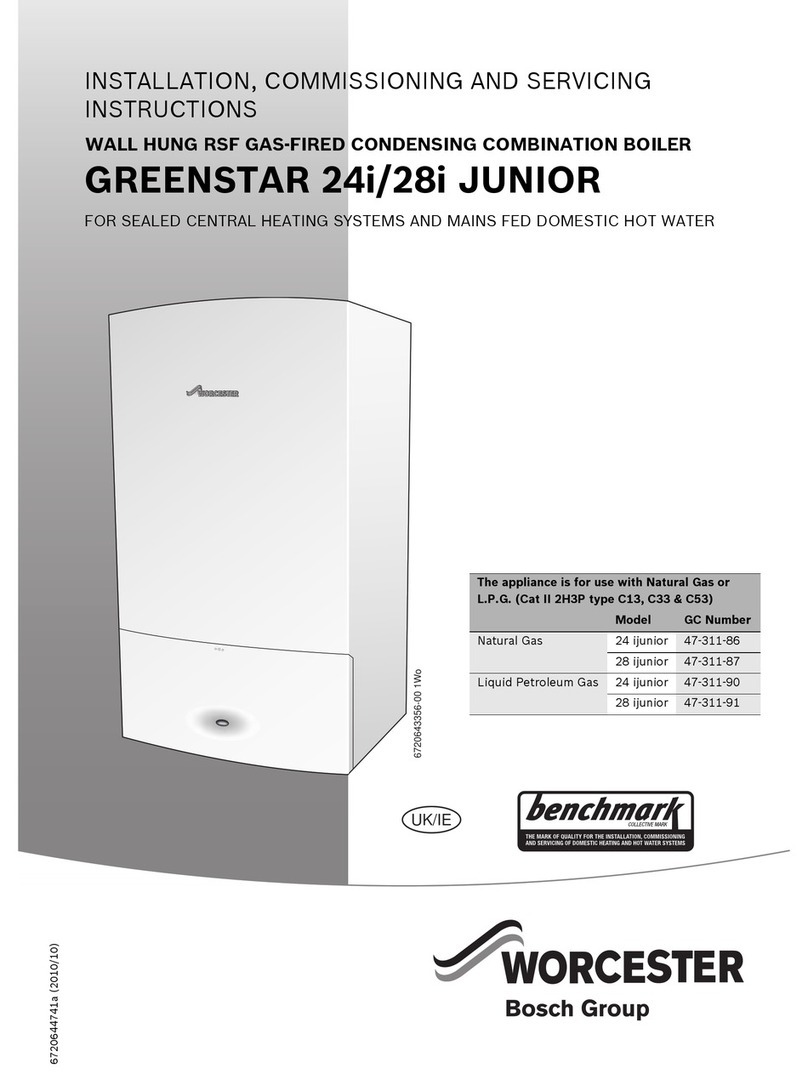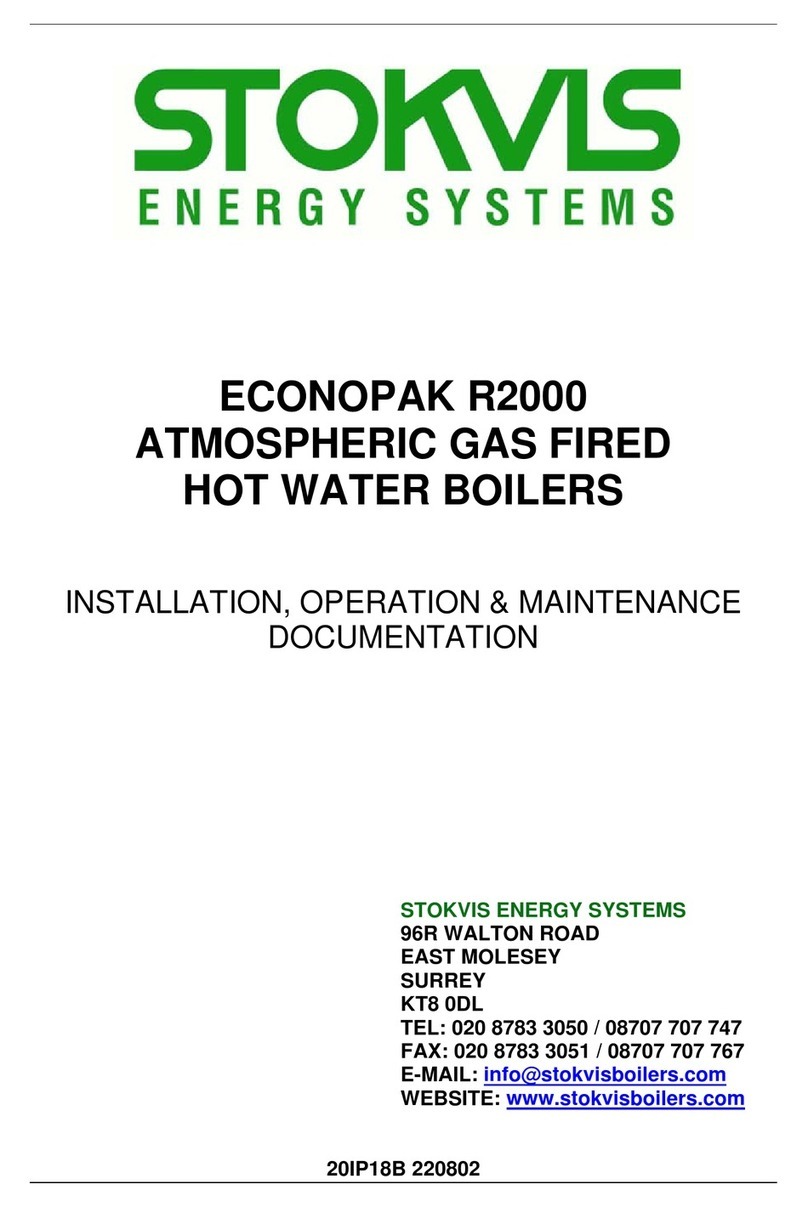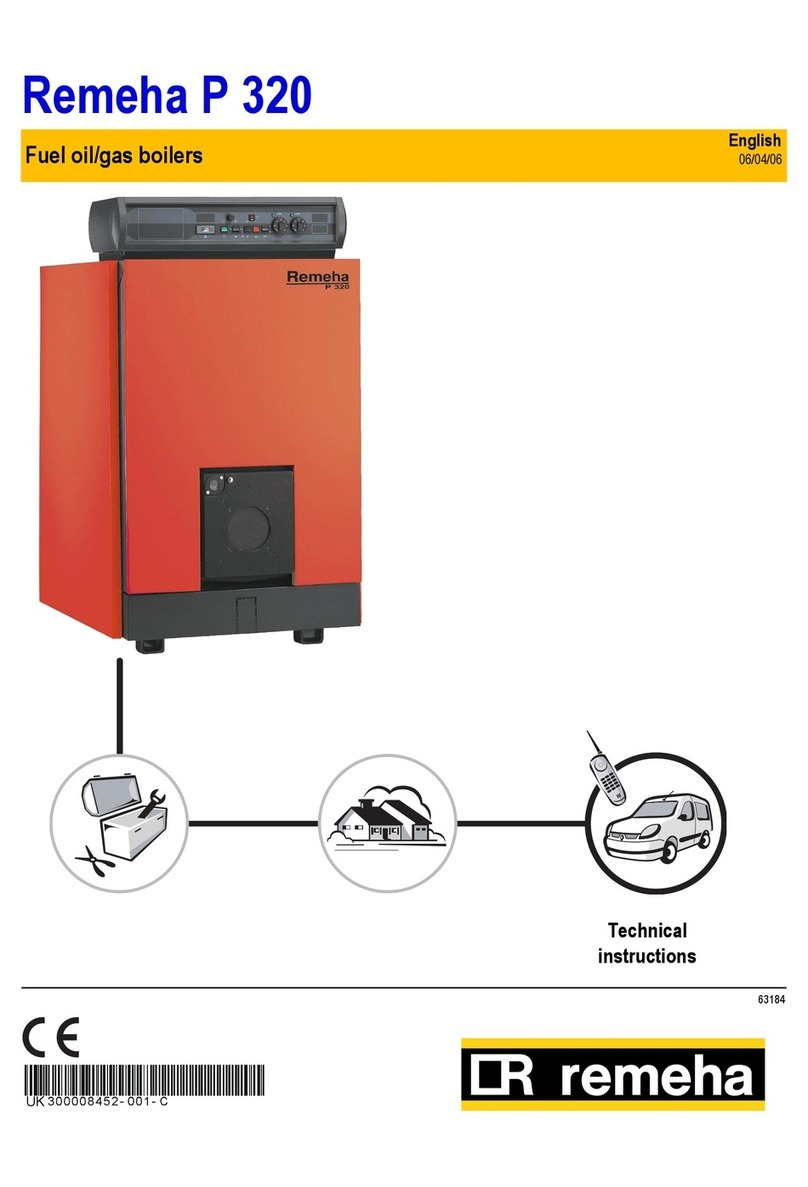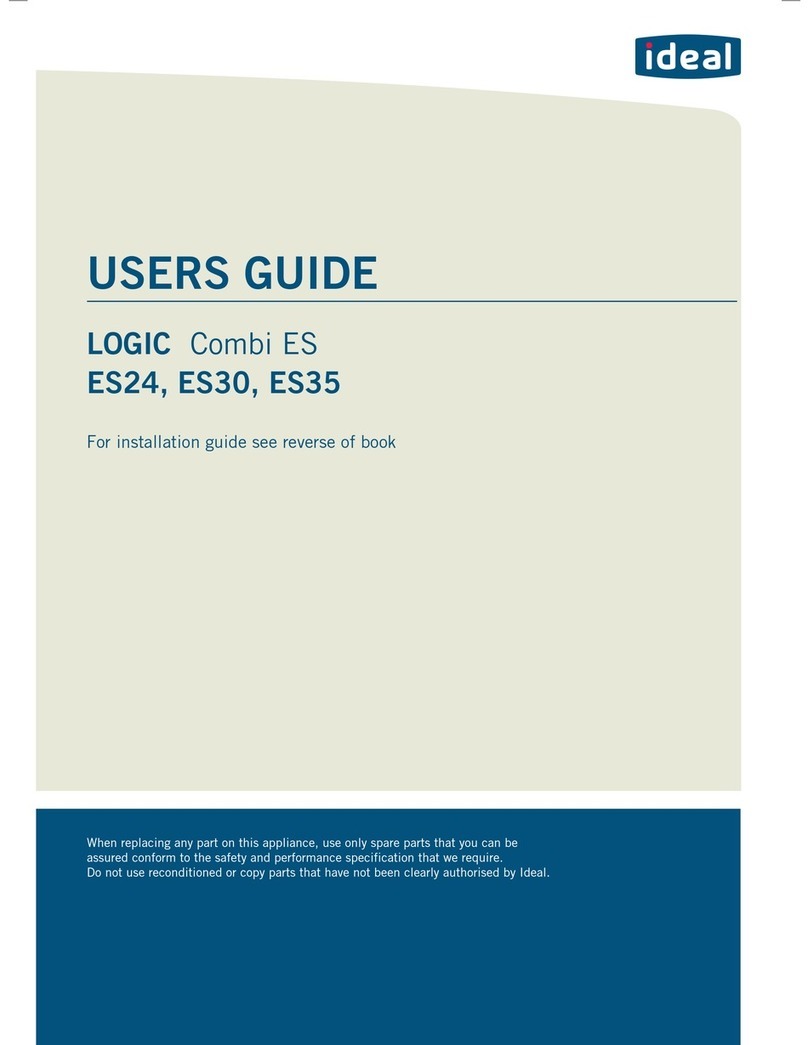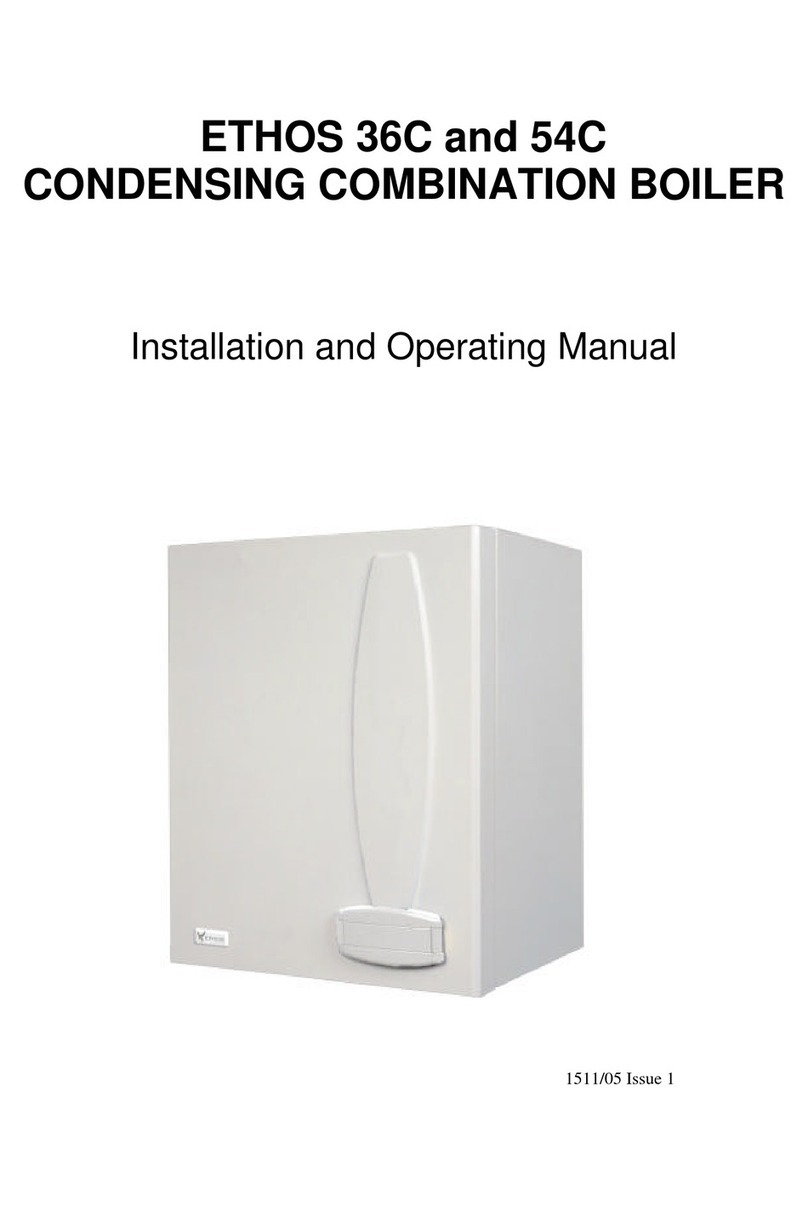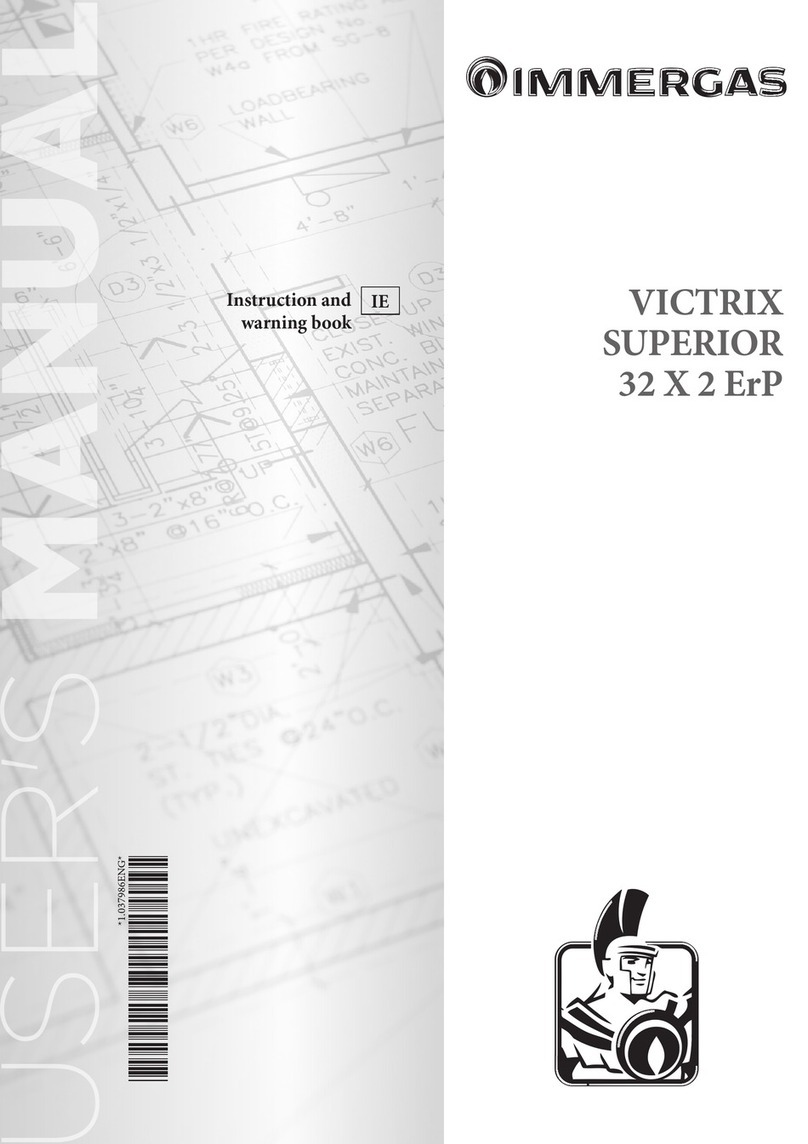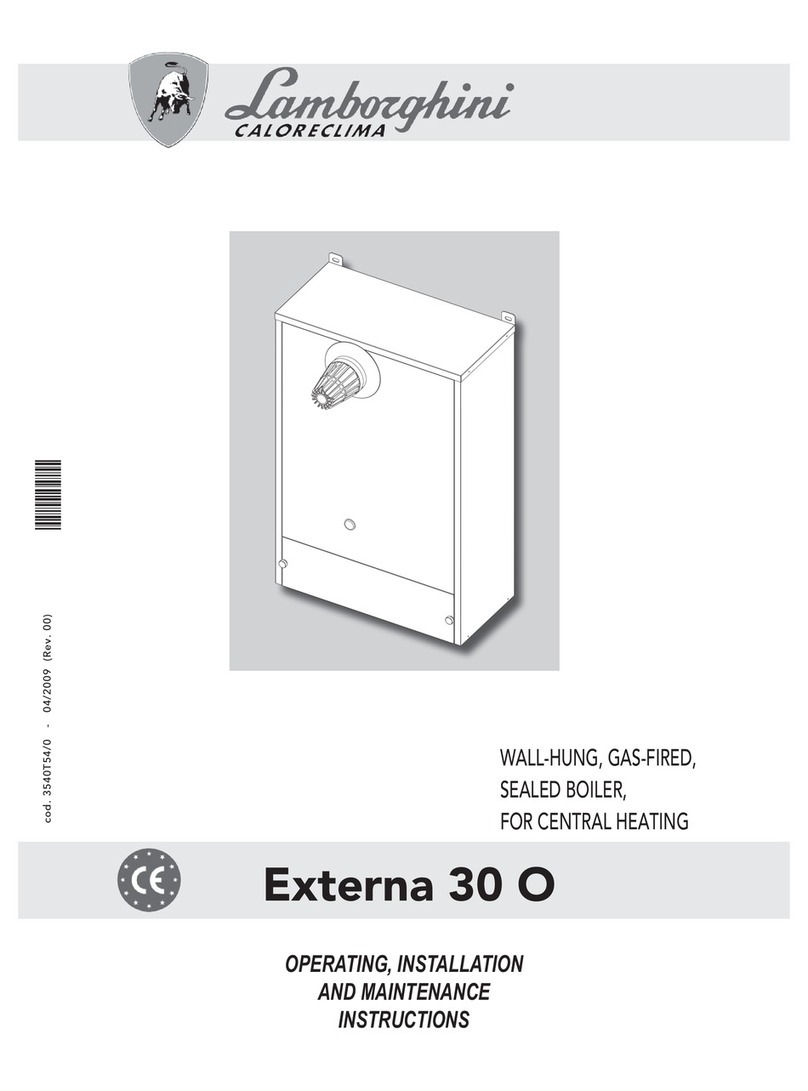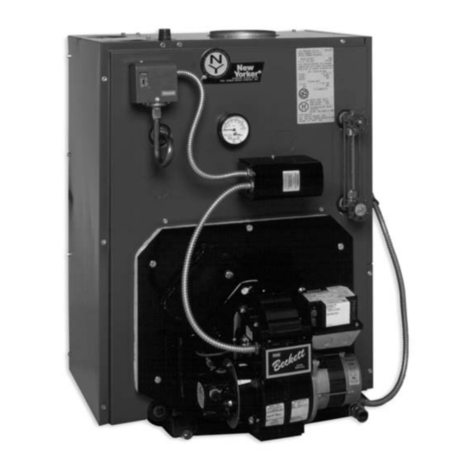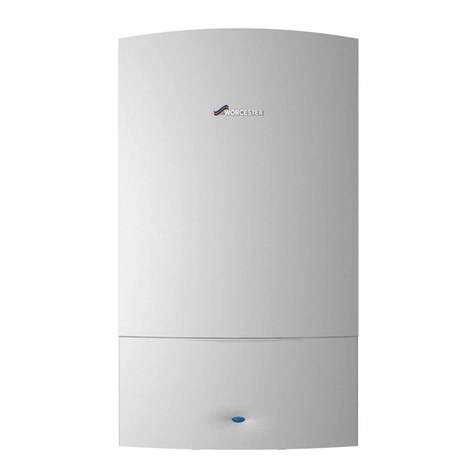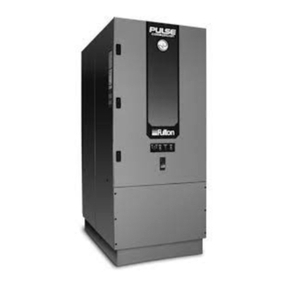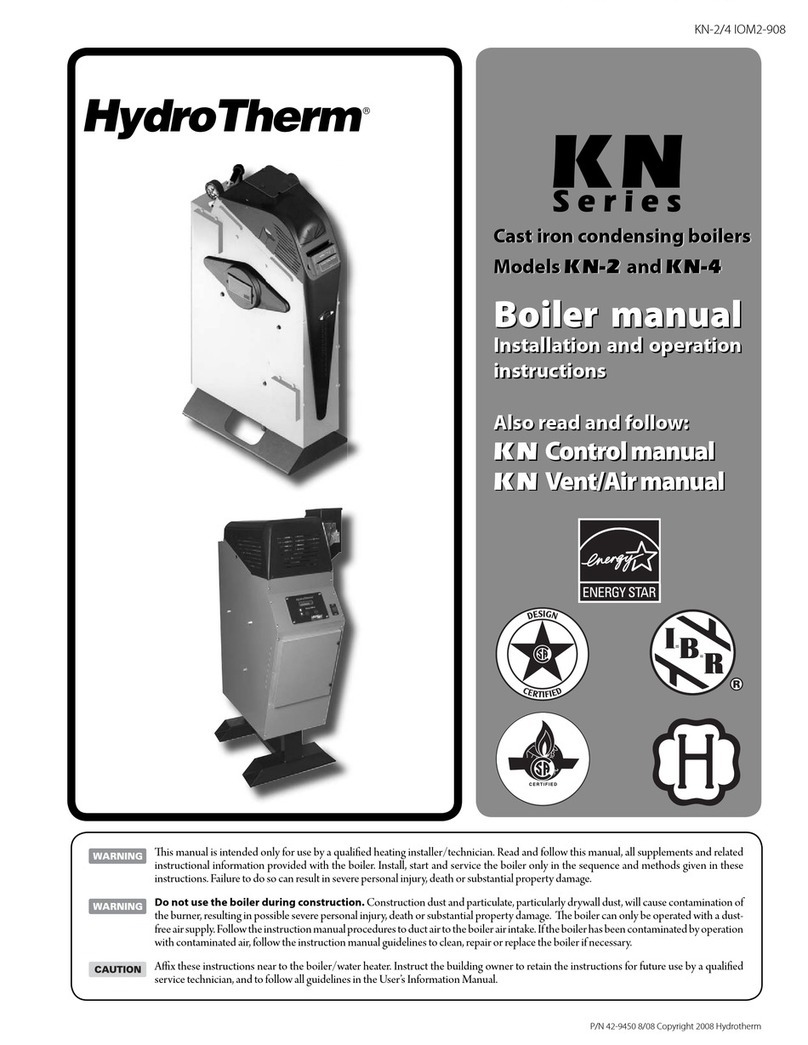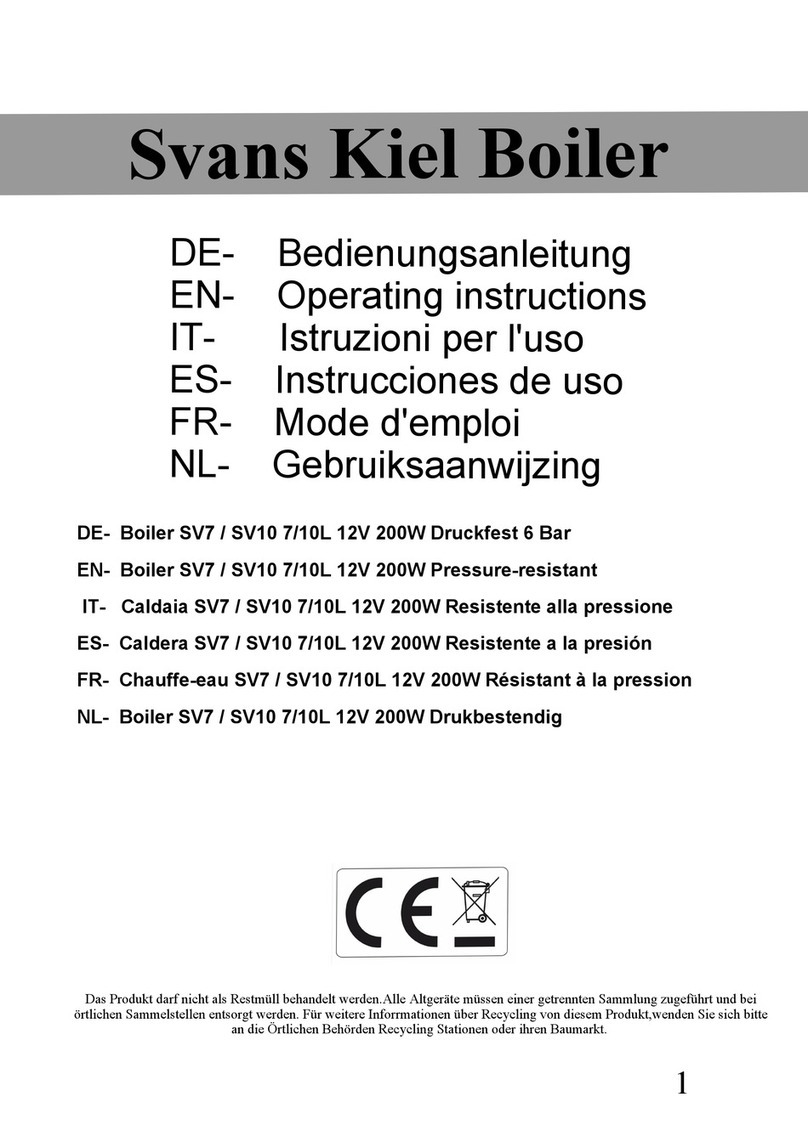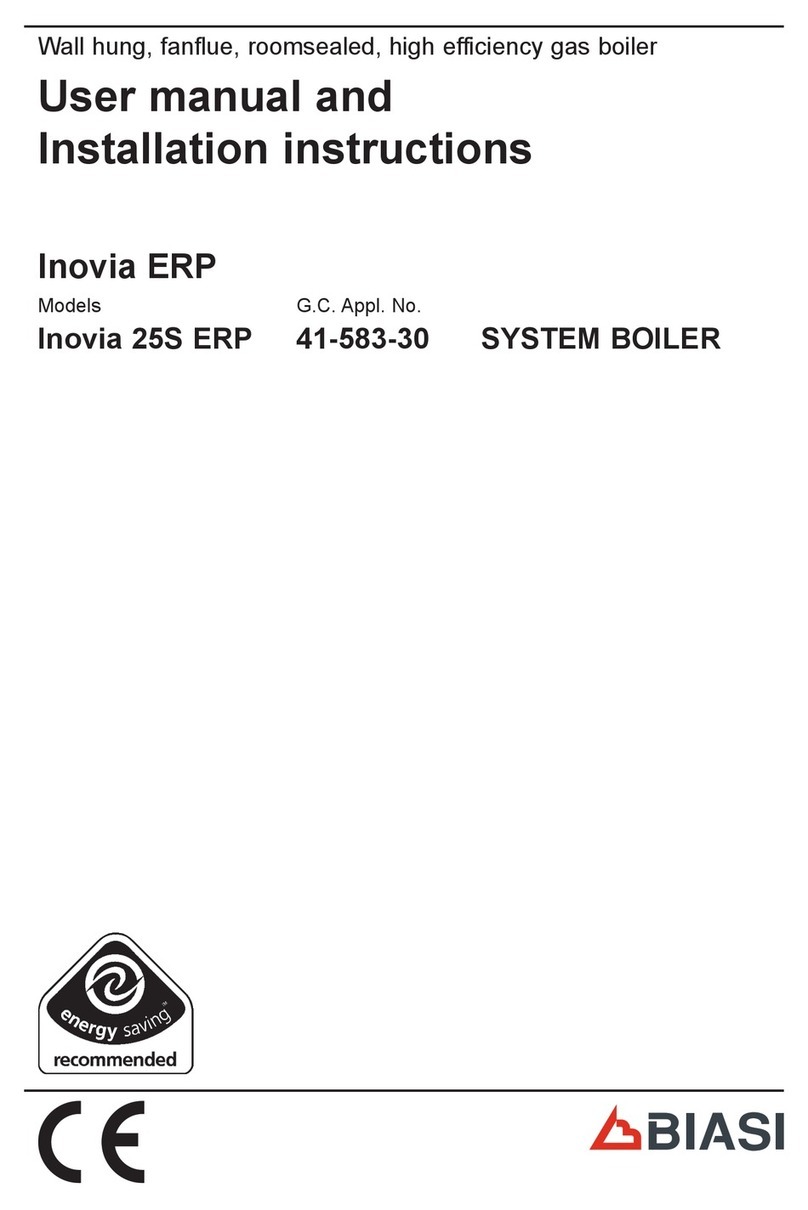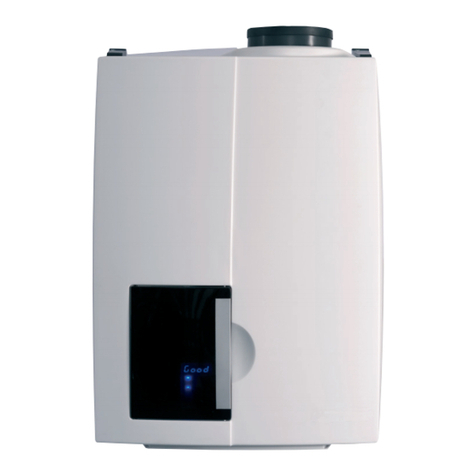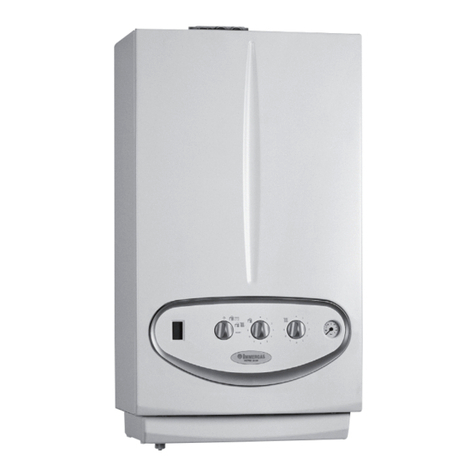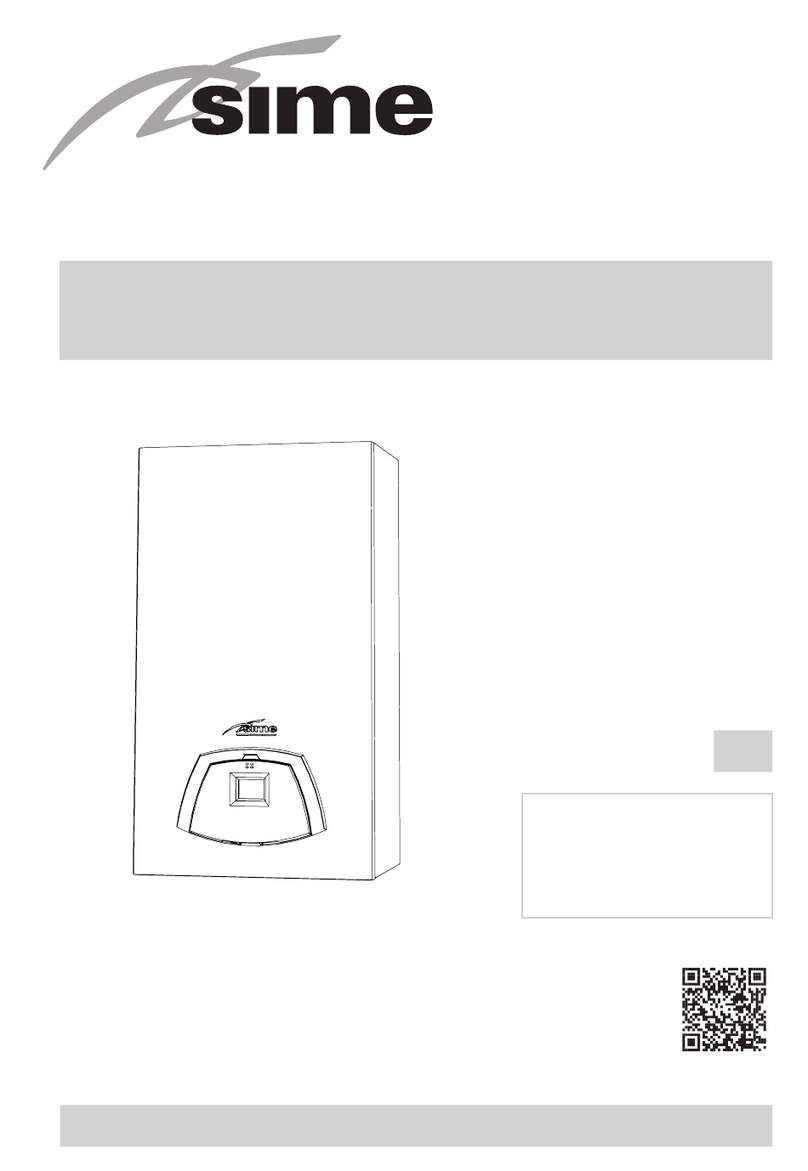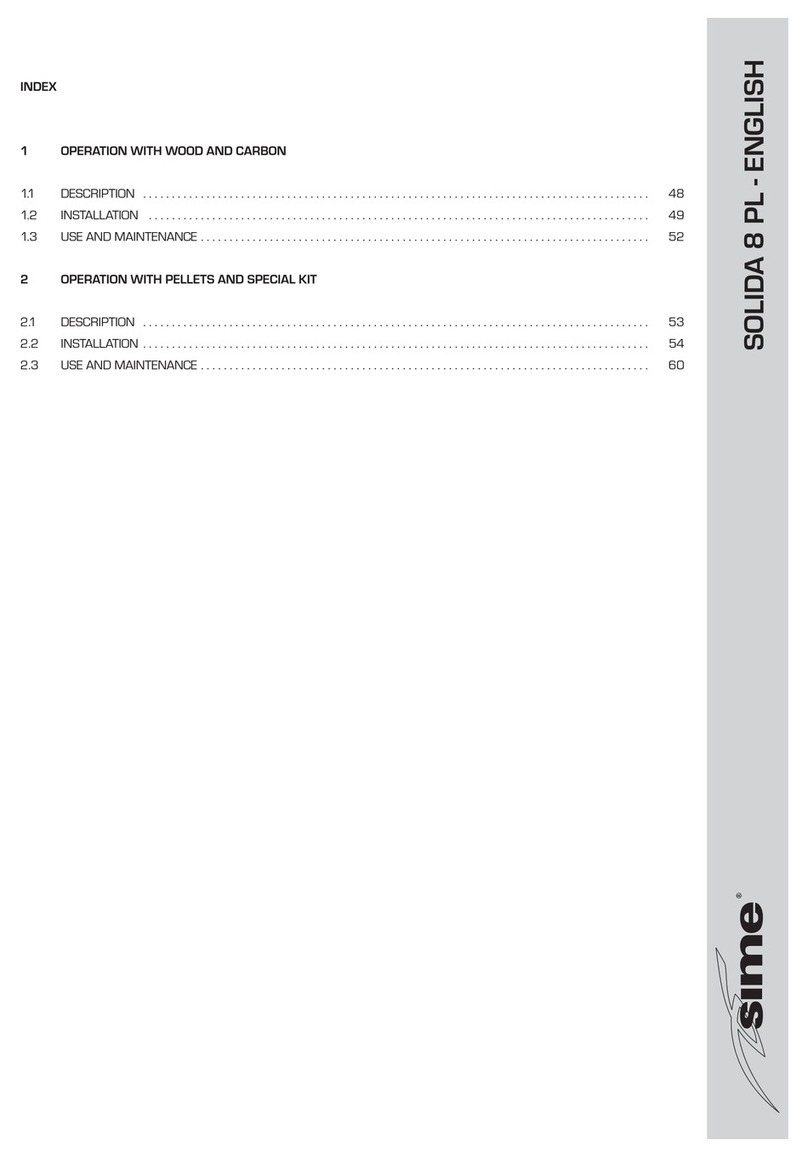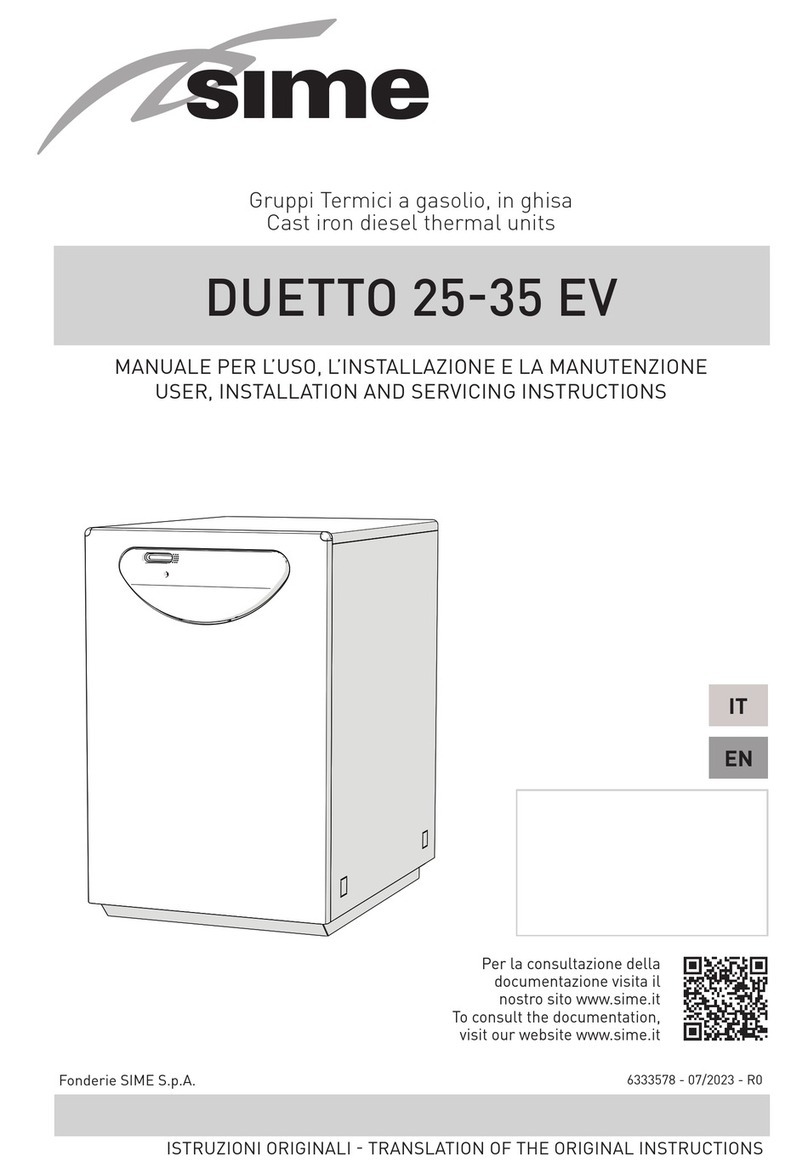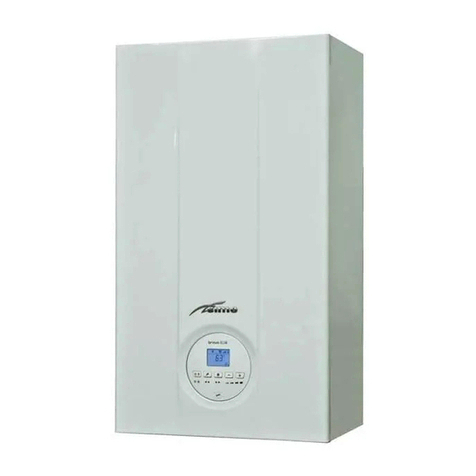2.1 BOILER ROOM
The boiler room should feature all the
characteristics required by standards
governing liquid fuel heating systems.
2.2 BOILER ROOM DIMENSIONS
Position the boiler body on the founda-
tion bed, which should be at least 0
cm high. The body should rest on a sur-
face allowing shifting, possibly by
means of sheet metal.
Leave a clearance between the boiler
and the wall of at least 0.60 m, and
between the top of the casing and the
ceiling of m (0.50 m in the case of
boilers with incorporated D.H.W. tank).
The ceiling height of the boiler room
should not be less than 2.5 m.
2.3 CONNECTIN UP SYSTEM
When connecting up the water supply
to the boiler, make sure that the speci-
fications given in fig. are observed.
All connecting unions should be easy to
disconnect by means of tightening
rings. A closed expansion tank system
must be used.
2.3.1 Filling the water system
Before connecting the boiler, thor-
oughly flush the system to eliminate
scale which could damage the appli-
ance.
Filling must be done slowly to allow any
air bubbles to be bled off through the
air valves.
In closed-circuit heating systems, the
cold water filling pressure and the pre-
charging pressure of the expansion
vessel should be no less than or equal
to the height of the water head of the
installation (e.g. for water head of 5
meters, the vessel pre-charging pres-
sure and installation filling pressure
should be at least 0.5 bar).
2.3.2 Characteristics of feedwater
The water used for the central heating
system should be treated in the follow-
ing cases:
– For extensive systems (with high
contents of water).
– Frequent addition of water into the
system.
– Should it be necessary to empty the
system either partially or totally.
2.3.3 D.H.W. storage tank
The “RONDÒ -ESTELLE ” boilers may
be matched with the separate boiler
units “BA100 -BA150 -BA200 ”.
The glass enamelled D.H.W. storage
tank comes with a magnesium anode
to protect the boiler and an inspection
flange for checking and cleaning.
The magnesium anode must be
checked annually and replaced if it
is worn.
Fit a safety valve calibrated to 6 bar
on the tubing of the cold water supply
to the boiler unit ( 2 fig. 2).
In case the system pressure is exces-
sive fit an appropriate pressure
reducer. If the safety valve calibrated
to 6 bar frequently intercepts, fit an
expansion vessel with a capacity of 8
litres and a maximum pressure of 8
bar ( fig. 2). The tank should be of
the membrane type, made of natural
rubber “caoutchouc”, which is suitable
for foods.
2.4 CONNECTIN UP FLUE
The flue is of fundamental importance
for the proper operation of the boiler; if
not installed in compliance with the
standards, starting the boiler will be
difficult and there will be a consequent
formation of soot, condensate and
encrustation.
The flue used to expel combustion
products into the atmosphere must
meet the following requirements:
– be constructed with waterproof
materials, and resistant to smoke
temperature and condensate;
–
be of adequate mechanical resilience
and of low heat conductivity;
– be perfectly sealed to prevent cool-
ing of the flue itself;
– be as vertical as possible; the termi-
nal section of the flue must be fitted
with a static exhaust device that
ensures constant and efficient
extraction of products generated by
combustion;
–
to prevent the wind from creating
pressure zones around the chimney
top greater than the uplift force of
combustion gases, the exhaust outlet
should be at least 0.4 m higher than
structures adjacent to the stack
(including the roof top) within 8 m;
– have a diameter that is not inferior
to that of the boiler union: square or
rectangular-section flues should
have an internal section 0%
greater than that of the boiler union;
– the useful section of the flue must
conform to the following formula:
S resulting section in cm2
K reduction coefficient for liquid
fuels:
– 0.045 for firewood
– 0.030 for coal
– 0.024 for light oil
– 0.0 6 for gas
P boiler input in kcal/h
H height of flue in meters, mea-
sured from the flame axis to the
top of the flue reduced by:
– 0.50 m for each change of
direction of the connection
union between boiler and flue;
– .00 m for each metre of
union itself.
2.5 FITTIN THE
CASIN “RONDÒ”
The casing and the control panel are
supplied in separate cardboard pack-
ages. The housing package also con-
tains the boiler documents and the
glass wool for insulating the cast iron
body. To fit the casing, proceed as fol-
lows (fig. 5):
– fit the lower front ( ) and back (2)
brackets to the heads with the four
TE screws supplied;
– insert the upper brackets (5) on the
tie-rods, fixing them with nuts;
– insulate the cast iron body with
glass wool, fixing it with the two
springs supplied;
– fit the left side (3) and the right side
(4) by inserting them in the tangs on
the brackets ( -2);
– fix the sides to the upper brackets
(5) with the four self-tapping screws
supplied;
– fit the two back panels (6) and (7) of
the sides with the ten self-tapping
screws supplied;
– fit the front panel (8) fixing it to the
sides with pin clutches
– fit the control panel (9) inserting the
two lower tangs of the panel on the
drains on the sides, and fix it with
the two self-tapping screws sup-
plied. Before carrying out this opera-
tion unwind the capillaries of the two
thermostats and the thermometer
and place the respective feelers in
the sheath ( 0), fixing all with a capil-
lary pin. Insert the burner cable into
the hole on the right or left side;
– screw the hydrometer feeler on the
connection ( );
27
P
S=K√H
2 INSTALLATION











